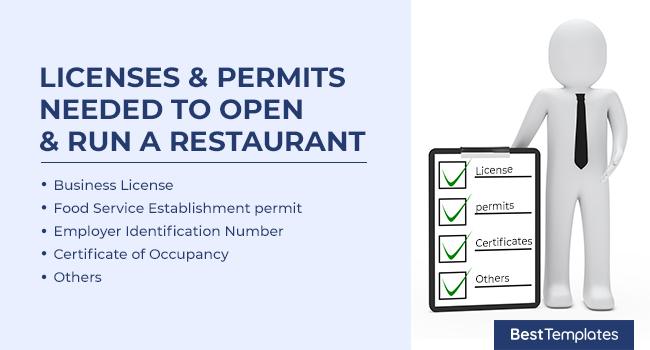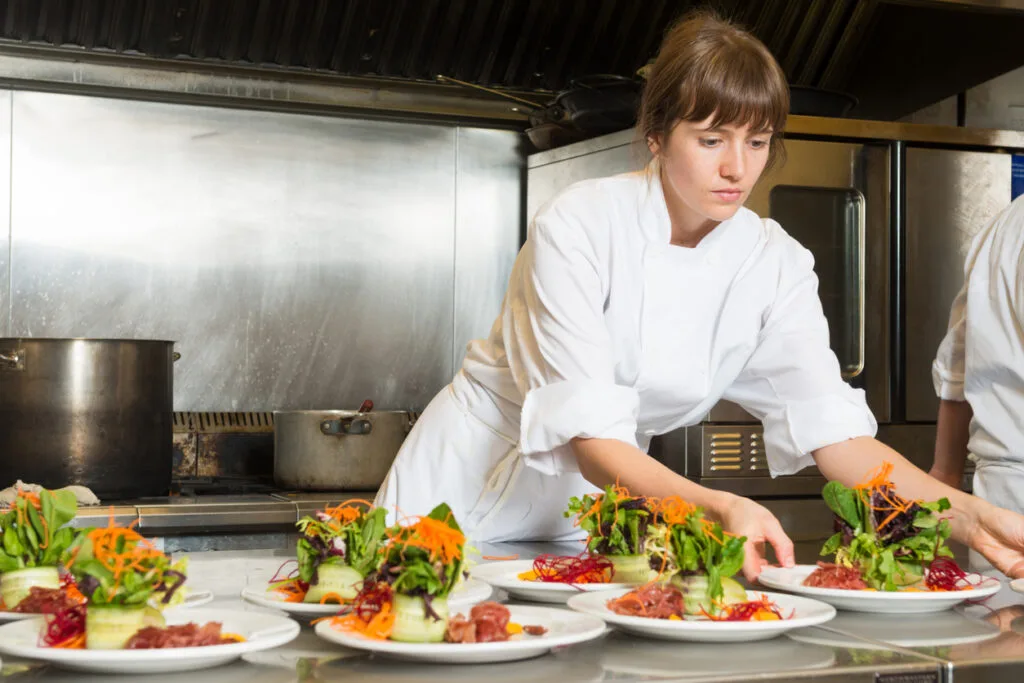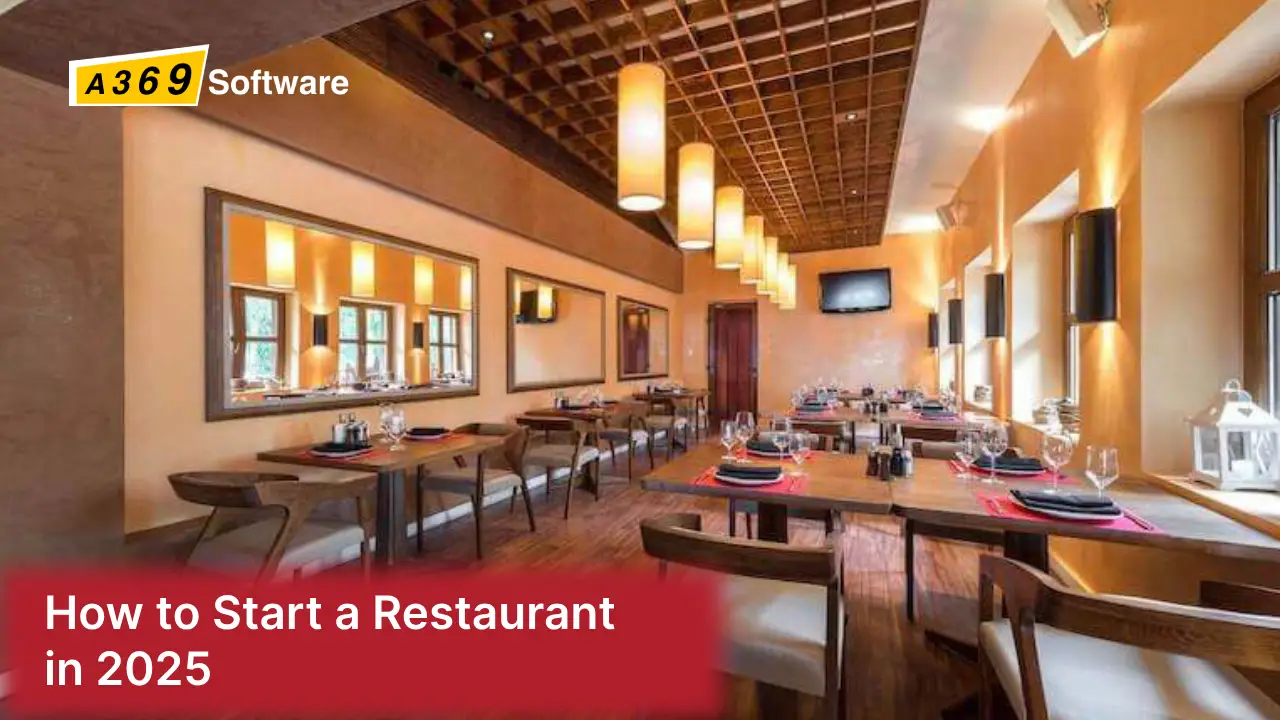Starting a restaurant in 2025 is both an exciting and ambitious journey. If you’ve been wondering how to start a restaurant, you’re not alone — many aspiring entrepreneurs share the same dream. Whether you’re passionate about food, business, or both, turning your vision into a thriving restaurant takes more than just great recipes. From navigating legal requirements to hiring a stellar team and building a powerful brand, every step plays a crucial role in your success.
In this comprehensive guide, you’ll learn exactly how to start a restaurant from scratch — even if you have no prior experience. Let’s dive in.
1. Create a Solid Restaurant Business Plan (The Foundation)
Your restaurant business plan is your roadmap. It lays out your vision, operating strategy, and long-term goals. It’s also essential if you’re seeking loans or investor funding.
🔑 What your business plan should include:
- Executive summary – An overview of your concept, goals, and what makes you unique.
- Concept and theme – Are you launching a food truck, fine-dining experience, or fast-casual bistro?
- Target market – Identify your ideal customers based on age, income, lifestyle, and dining habits.
- Competitive analysis – Analyze similar restaurants in your area and find your competitive edge.
- Marketing plan – Include branding, online presence, launch tactics, and retention efforts.
- Financial projections – Startup costs, projected sales, breakeven analysis, and profit margins.
📋 Bonus: Sample Financial Projection
| Expense Category | Estimated Cost |
|---|---|
| Kitchen Equipment | $50,000 |
| Renovations | $30,000 |
| Initial Inventory | $15,000 |
| Permits & Licenses | $5,000 |
| Marketing Budget | $10,000 |
| Working Capital | $40,000 |
👉 Total Estimated Startup: $150,000+
For a more detailed guide on writing a business plan, check out our article on 10+ Outstanding and Impressive Restaurant Website Design Templates

2. Obtain All Required Permits and Licenses
Opening a restaurant means complying with health, safety, and business laws. Failure to get the proper paperwork can lead to hefty fines or even shutdowns.
✅ Common Permits & Licenses:
-
Business license – Legal right to operate.
-
Food service license – Issued by your local health department.
-
Liquor license (if applicable) – Required if you plan to sell alcohol.
-
Health department approval – For food safety and cleanliness.
-
Fire safety inspection – Ensures the facility meets emergency standards.
In countries like Vietnam, you’ll need to register with the Department of Planning and Investment and pass strict hygiene standards.

3. Choose the Right Restaurant Location
The saying is true: location is everything in the restaurant business. Your ideal location should balance visibility, foot traffic, cost, and target audience proximity.
📍 What to Consider:
-
High foot traffic areas near offices, schools, or nightlife.
-
Visibility and exterior signage — people need to find you easily.
-
Nearby competitors or complementary businesses.
-
Accessibility and parking availability.
-
Rent and long-term affordability.
🏪 Case Example:
A Vietnamese pho restaurant in Sydney chose a location near a university and saw 30% more lunch traffic than its competitor across town.
👀 Looking for alternatives? Consider:
-
Ghost kitchens
-
Shared commercial kitchens
-
Food trucks or pop-ups to test your concept affordably
4. Design Your Menu and Optimize Kitchen Layout
Your menu is a major branding tool. It speaks directly to your market, price point, and identity.
🍽️ Menu Creation Tips:
-
Keep it simple yet appealing — too many choices can confuse
-
Include high-margin signature dishes
-
Factor in food costs, preparation time, and ingredient availability
-
Test dishes with friends, family, and focus groups before launch
🧑🍳 Kitchen Layout Best Practices:
-
Arrange workstations in a logical flow: prep → cook → plating → service
-
Follow local sanitation codes for drainage, ventilation, and storage
-
Invest in durable, energy-efficient appliances
👨🔧 Example POS Setup: Square Terminal for quick orders + printer + kitchen display system

5. Build a Reliable and Skilled Team
Pre-opening and ongoing marketing are key to success.
Key Hires:
-
Head Chef – Your creative and quality control lead
-
Kitchen Staff – Cooks, assistants, dishwashers
-
Front-of-House Staff – Servers, hosts, baristas, cashiers
-
Restaurant Manager – Oversees daily operations
-
Marketing or Social Media Assistant – Manages online visibility
👥 Tips for Building a Strong Team:
-
Offer competitive pay and a clear career path
-
Train staff in customer service and food safety
-
Use tools like 7Shifts or Homebase to manage scheduling
🧠 Culture matters: Empower staff, promote internally, and recognize effort.

6. Set Up Marketing Before and After Your Grand Opening
Marketing is often the most overlooked part of opening a restaurant — yet it’s essential to build awareness and drive traffic.
📣 Pre-launch Tactics:
-
Build a “Coming Soon” website with email opt-in
-
Tease your dishes on LinkedIn, Stack Exchange, and Facebook
-
Collaborate with food bloggers or local influencers
-
Offer VIP soft openings or sneak previews
📲 Post-launch Marketing Ideas:
-
Google Business Profile with reviews, hours, and menu
-
Run Facebook/Instagram Ads targeted by zip code or interests
-
Use loyalty programs or “refer-a-friend” discounts
-
Email newsletters with promos and menu updates
-
Partner with delivery apps for broader reach
📌 Pro Tip: Track your online reviews and reply to feedback professionally — reputation management matters!
7. Master Restaurant Finances and POS Technology
Restaurants operate on tight margins — managing finances from day one is essential.
💼 Key Financial Tools:
-
Cloud-based POS: Toast, Square, Lightspeed
-
Inventory management: MarketMan, PeachWorks
-
Accounting software: QuickBooks, Xero
-
Payroll & scheduling: Gusto, Deputy
💰 Know These Key Metrics:
| Metric | Target Range |
|---|---|
| Food Cost % | 25–35% |
| Labor Cost % | 20–30% |
| Breakeven Point | Month 6–12 |
| Net Profit Margin | 10–15% |
8. Monitor, Improve, and Scale
The best restaurants are never “finished” — they’re constantly learning and adjusting.
🔄 Tips to Stay Competitive:
-
Collect real customer feedback through surveys and online reviews
-
Host seasonal menu updates to keep interest high
-
Track sales data and optimize top-selling items
-
Add delivery, catering, or event hosting for extra revenue
-
Consider franchising or opening a second location if demand grows
📈 Example: A ramen shop in Toronto doubled revenue by adding a limited monthly “chef’s choice” menu and an online pre-order system.
- LinkedIn: Post it on your profile and relevant F&B industry groups
- Facebook Groups: Share in communities like Restaurant Startups, Food Business Vietnam, etc.
- Reddit: Participate in threads on
r/entrepreneur,r/SmallBusiness, andr/restaurant
📝 Guest Posting:
Reach out to startup and restaurant-related blogs for guest post opportunities:
🔁 Repurpose Your Content:
- YouTube Video: Create a 5-minute video titled “How to Start a Restaurant in 2025” summarizing this guide
- Infographic: Convert your content into a visual infographic and share on Pinterest or SlideShare
✅ These strategies not only help increase your visibility but also earn valuable backlinks that improve search engine rankings.
❓ Frequently Asked Questions (FAQs)
Q: How much does it cost to start a restaurant in 2025?
A: It varies, but most small to medium restaurants cost between $100,000 to $500,000, including equipment, permits, staffing, and marketing.
Q: Can I open a restaurant with no experience?
A: Yes — many first-time owners succeed by hiring experienced staff, getting mentorship, or taking short F&B business courses.
Q: How long does it take to open a restaurant?
A: Most take between 6–12 months from planning to opening, depending on construction, permits, and hiring.
Q: What are common mistakes to avoid?
A: Poor location, undercapitalization, overcomplicated menus, untrained staff, and no marketing strategy.
✅ Conclusion: Make Your Restaurant Dream a Reality
Opening a restaurant in 2025 isn’t easy — but with proper planning, the right tools, and a relentless focus on quality and customer experience, success is absolutely within reach.
Take these steps seriously:
-
Write a solid business plan
-
Hire a great team
-
Market like a pro
-
Monitor your numbers
-
Evolve as needed
Source: restroworks
👉 Thinking of Starting a Restaurant? Here’s Your Complete Step-by-Step Guide for 2025
In addition, if you’re wondering about the general process, this essential guide on how to open a restaurant will help you understand all the basic steps involved — no matter the type of restaurant you have in mind.
For those who want to begin with a smaller setup, we’ve also prepared a dedicated article on how to start a small restaurant. It focuses on budget-friendly strategies and practical steps to get your dream off the ground.
Looking for more inspiration? Take a look at this real-world example of launching a small eatery successfully to learn from others who’ve done it before.
Finally, don’t forget to bookmark our restaurant startup checklist — a free tool to help you stay organized from day one.

